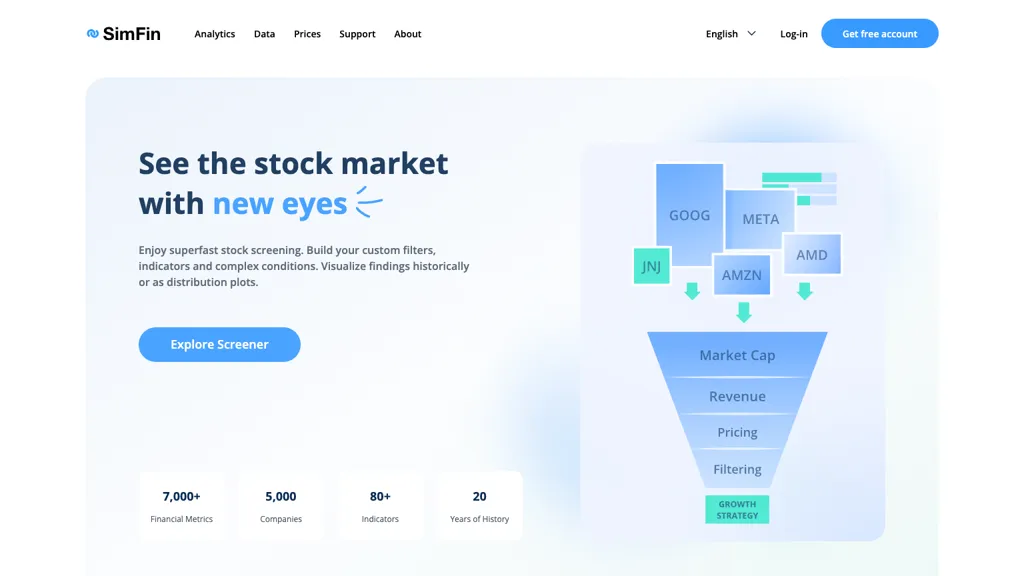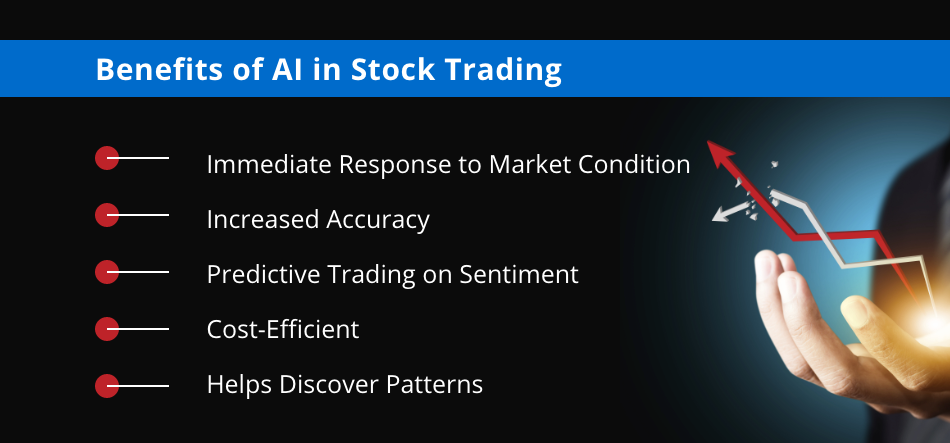The AI and machine (ML) model used by the stock trading platforms and prediction platforms need to be evaluated to make sure that the information they offer are reliable trustworthy, useful, and practical. Models that are overhyped or poorly constructed could lead to inaccurate predictions and even financial losses. Here are the top ten guidelines for evaluating the AI/ML models on these platforms:
1. Understand the Model's Purpose and Method of Approach
It is crucial to determine the goal. Make sure the model was designed to be used for long-term investment or short-term trading.
Algorithm disclosure: Find out whether the platform has disclosed which algorithms it uses (e.g. neural networks and reinforcement learning).
Customization. Examine whether the parameters of the model can be customized to suit your personal trading strategy.
2. Evaluate Model Performance Metrics
Accuracy: Check the model's prediction accuracy. However, don't solely rely on this measure. It could be misleading on financial markets.
Precision and recall (or accuracy) Find out the extent to which your model can distinguish between true positives - e.g. precisely predicted price movements as well as false positives.
Risk-adjusted results: Evaluate the impact of model predictions on profitable trading despite the accounting risks (e.g. Sharpe, Sortino, etc.).
3. Test the Model with Backtesting
History of performance The model is tested by using data from the past to determine its performance under previous market conditions.
Tests on data not intended for training To prevent overfitting, test your model using data that has not been previously used.
Scenario Analysis: Check the model's performance in different market conditions.
4. Make sure you check for overfitting
Overfitting signs: Look for models that perform extremely good on training data but poorly on unseen data.
Regularization: Check whether the platform uses regularization techniques, such as L1/L2 or dropouts to avoid excessive fitting.
Cross-validation (cross-validation) Verify that your platform uses cross-validation to assess the generalizability of the model.
5. Examine Feature Engineering
Relevant features: Verify that the model includes relevant attributes (e.g. price, volume and technical indicators).
Feature selection: Ensure the application selects characteristics that have statistical significance. Also, avoid redundant or irrelevant data.
Dynamic feature updates: Check whether the model is able to adapt to changing market conditions or to new features as time passes.
6. Evaluate Model Explainability
Interpretability: Make sure the model is clear in its explanations of its predictions (e.g. SHAP value, significance of particular features).
Black-box model Beware of platforms that employ models that are too complex (e.g. deep neural networks) without describing the the tools.
User-friendly insight: Determine if the platform can provide actionable insight to traders in a manner that they understand.
7. Examine the flexibility of your model
Market shifts: Determine whether your model is able to adapt to market changes (e.g. new regulations, economic shifts or black-swan events).
Check for continuous learning. The platform must update the model often with new data.
Feedback loops - Make sure that the platform integrates real-world feedback from users and feedback from the user to improve the system.
8. Be sure to look for Bias & Fairness
Data bias: Make sure that the information provided within the program of training is accurate and does not show bias (e.g., a bias toward certain industries or times of time).
Model bias: Determine if the platform actively monitors and mitigates biases in the predictions made by the model.
Fairness: Make sure whether the model favors or disfavor specific trade styles, stocks or particular segments.
9. Assess the efficiency of computation
Speed: See whether you can predict using the model in real-time.
Scalability - Make sure that the platform can handle massive datasets, multiple users, and does not affect performance.
Resource usage: Check if the model uses computational resources efficiently.
10. Transparency and accountability
Model documentation: Verify that the model platform has comprehensive documentation on the model's architecture, the training process as well as its drawbacks.
Third-party Audits: Determine if the model has been independently audited or validated by third organizations.
Verify if there is a mechanism in place to detect errors or failures in models.
Bonus Tips
User reviews Conduct user research and study cases studies to evaluate the effectiveness of a model in actual life.
Trial period: You may use an demo, trial or free trial to test the model's predictions and the usability.
Support for customers - Make sure that the platform you choose to use is able to provide robust support to help you resolve technical or model related issues.
These tips will assist you in assessing the AI models and ML models that are available on stock prediction platforms. You'll be able to assess whether they are honest and trustworthy. They must also align with your trading objectives. Take a look at the most popular full report about best AI stock trading bot free for site tips including ai investment platform, AI stock trading, options ai, ai investing app, chart ai trading assistant, ai investing, AI stock trading, AI stock picker, ai investing app, AI stock market and more.

Top 10 Suggestions For Evaluating The Reputation, Reviews And Reviews Of Ai-Powered Stock Trading Platforms
To ensure reliability, trustworthiness and effectiveness, it is essential to assess the reputation and reviews of AI-driven prediction and trading platforms. Here are the top 10 methods to determine their reputation and reviews:
1. Check Independent Review Platforms
Reviews can be found on reputable platforms such as G2, copyright or Capterra.
The reason: Independent platforms provide unbiased feedback from real users.
2. Analyze user testimonials and case research
Users can read user reviews or case studies on the website of the platform, and third-party websites.
What are the benefits? They provide insight into real-world performance and satisfaction of users.
3. Evaluation of Expert Opinions, Industry Recognition
Tip: Check if industry experts or financial analysts from reliable publications have been recommending or reviewing the platform.
Expert endorsements are a fantastic way to boost credibility and credibility to a platform.
4. Social Media Sentiment
TIP: Go through social media sites for discussion and opinions on the platform (e.g. Twitter, LinkedIn, Reddit).
Why: Social media offers unfiltered opinions and trends on the platform.
5. Verify compliance with the regulations.
Make sure your platform conforms to financial regulations such as SEC and FINRA or regulations on privacy of data, such as GDPR.
The reason: Compliance is essential to ensure that the platform is operating legally and ethically.
6. Transparency is a crucial factor in performance measures
Tips: Search for transparent performance metrics on the platform (e.g. accuracy rates and ROI).
Transparency is crucial because it builds trust, and lets users evaluate the effectiveness of the system.
7. How to evaluate Customer Support
Read reviews to find out how responsive and efficient the customer service can be.
Why: Having reliable support is key to resolving problems with users and ensuring an overall positive experience.
8. Red Flags should be checked in reviews
TIP: Watch out for repeated complaints, such as poor performance, hidden fees or the absence of any updates.
Why: Consistently negative feedback could indicate problems with the platform.
9. Evaluation of User and Community Engagement
Tips - See if there is an active community of users using the platform (e.g. Discord groups, forums) and also if they interact with their users regularly.
The reason An active user base is a sign of satisfaction and support.
10. Review the track record of the business
Learn about the company's history, leadership and previous performance in the financial tech space.
What's the reason? A track record can increase confidence in the platform’s reliability and knowledge.
Compare Multiple Platforms
Compare reviews and reputations to find platforms that best meet your needs.
Utilize these suggestions to determine the reputation, reviews, and ratings of AI stock trading and prediction platforms. Check out the top stock trading ai recommendations for more tips including free AI stock picker, ai options, trading ai tool, free ai tool for stock market india, how to use ai for copyright trading, how to use ai for copyright trading, best AI stock prediction, how to use ai for stock trading, how to use ai for copyright trading, trading ai tool and more.
